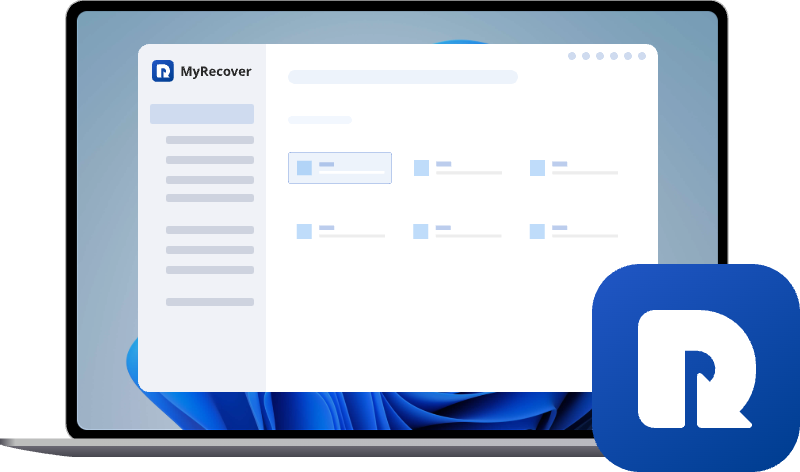How to Recover Uninstalled Programs on Windows 10? Try These Methods
Maybe you accidentally removed a crucial application, or perhaps you simply want to bring back a favorite software that you thought was gone for good. Whatever your reason, fret not! This guide will explore a range of solutions that can help you recover uninstalled programs on Windows 10.
Why Programs Get Uninstalled
For most users, uninstalling unnecessary programs is the simplest and most effective way to free up more available space, whether on mobile phones or computers. Accidentally deleting important files while cleaning up memory is not a rare occurrence. Typically, users uninstall programs for the following reasons – see if any of these apply to you:
- Accidental Uninstall: The most frequent cause is an accidental uninstall. This can happen if you mistakenly click the uninstall option when trying to manage your programs.
- Windows Updates: Sometimes, Windows 11 updates delete files or uninstall programs. In some cases, Windows may uninstall older or incompatible programs to avoid system conflicts.
- System Maintenance: Many users run disk cleanup tools or third-party cleaning apps to free up space and optimize system performance. These tools sometimes remove or suggest removing unused programs.
- End of Trial: Many paid software programs offer a free trial for a certain period. Once the trial ends, you will no longer be able to access them.
- Malware or Viruses: Malware or viruses can also cause issues with your installed software, including uninstalling programs or corrupting files.
Now that you know the common causes behind uninstalled programs, it’s important to explore how you can recover them and prevent future occurrences. In next section, we'll dive into how to recover uninstalled programs on Windows 10.
How to Recover Uninstalled Programs on Windows 10
If you accidentally uninstalled an important program or lost access to software on your computer, there are three solutions to recover uninstalled programs on Windows 10. You can choose any one according your computer actual situation.
✅Reinstalling the Program
The simplest and most direct way to recover an uninstalled program is by reinstalling it. If you still have access to the program’s installation file or can download it from the official website, this method will quickly restore your software.
✅Restore Program using System Restore
System Restore is a Windows feature that allows users to revert their computer's state to a previous point in time, useful for resolving software issues or system problems without losing personal data. This can be particularly useful when troubleshooting issues caused by recent changes, such as software installations, driver updates, or system settings modifications.
Windows automatically creates restore points when the system is updated or software is installed. There is one more thing to note before restoring uninstalled programs using System Restore. System Restore cannot recover deleted files, folders, installed applications, and other changes made after the restore point was created. Therefore, it’s crucial to back up your data beforehand to prevent potential data loss.
How to restore uninstalled programs with system restore
Step 1. Type "Recovery" in the start bar and open ”Recovery" settings.
Step 2. Click "Open System Restore" and click on "Next".
Step 3. Select a restore point that was made before you uninstalled the program. Then, click "Next".
Step 4. Click "Finish" to start the restore process.
How to manually create a system restore
If no restore point is automatically generated, you can also create one manually following these steps.
Step 1. Type "Recovery" in the start bar and open "Recovery" settings.
Step 2. Click "Configure System Restore" to open "System Properties". Then select "System Protection" tab.
Step 3. If the "system" drive protection is turned on, System Restore is already enabled on your computer. If it is off, go to the next step.
Step 4. Click "Create" and enter a descriptive name for the restore point, then click on "Create".
The system will begin creating the restore point, which may take a few minutes. When restore point is created, you can verify it in the "System Protection" settings by clicking on the "System Restore" button and reviewing the available restore points.
✅Restore with Professional Data Recovery Tool—MyRecover
If you didn’t create a restore point before uninstalling the program, it doesn’t mean there’s no solution. MyRecover is worth a try. As a professional data recovery software, it not only supports recovering uninstalled programs but also file types like images, videos, documents, and compressed packages. It can easily recover desired files without any backup. Additionally, if you failed to back up important personal files before using System Restore, you can also recover these files via MyRecover.
Here are some stunning points of MyRecover:
✅Broad Compatibility: It supports file recovery on storage devices such as SSDs, HDDs, SD cards, and USB drives.
✅High Reliability: During the recovery process, it only reads data without writing, avoiding data overwriting.
✅Versatile Recovery Capability: It covers various complex data loss scenarios, including recovery from inaccessible partitions, deleted partitions, formatted hard disks, crashed systems, and more.
✅Comprehensive Scan: You can run "Quick Scan" to recover data quickly, or choose "Deep Scan" to retrieve more data from fragmented clues.
4 steps to recover uninstalled programs:
Step 1. Download and install MyRecover on your computer, avoid installing it on the drive with lost data.
Step 2. Select the drive to scan for lost files and click "Scan".
Step 3. Choose the files you want to recover from the lists and click "Recover".
Step 4. Select a secure location to store the recovered files.
Summary
Choosing the right method can make recovering uninstalled programs on Windows 10 a simple task. If you’re looking for a tool to protect data security long-term, MyRecover is an excellent choice. The Professional and Technician editions of MyRecover can meet your more advanced needs – they allow unlimited data recovery and you to preview file contents before restoring them.


